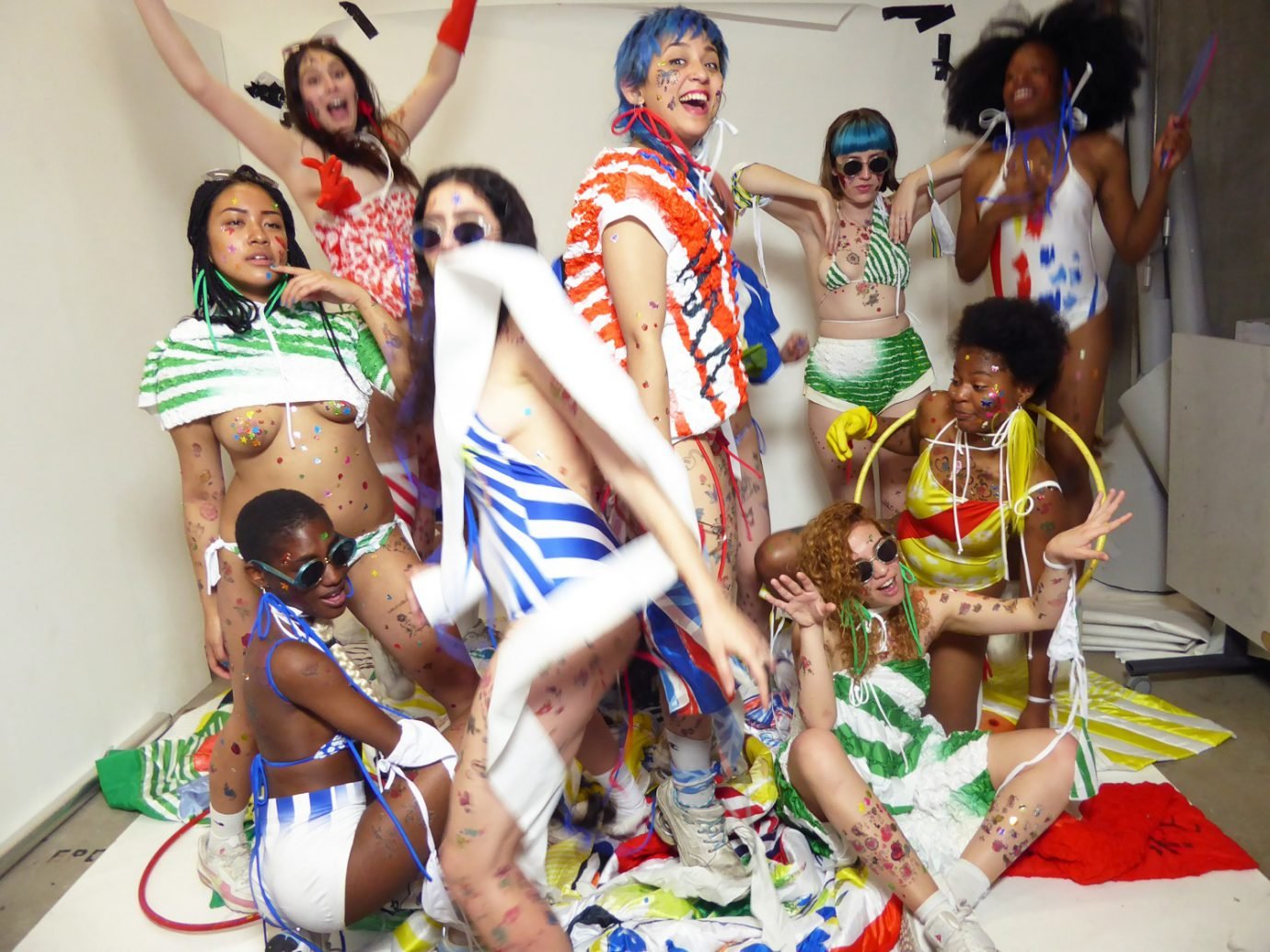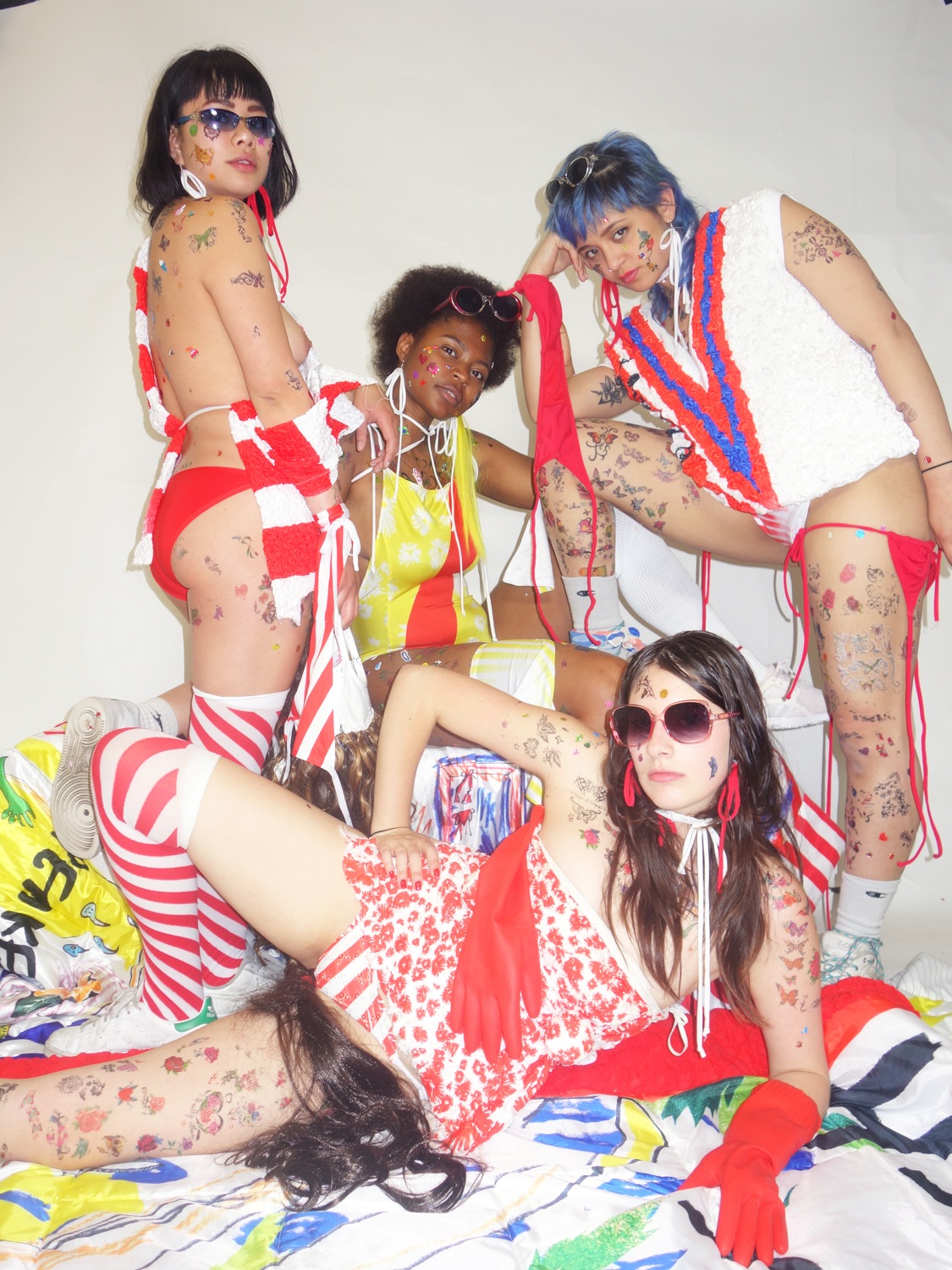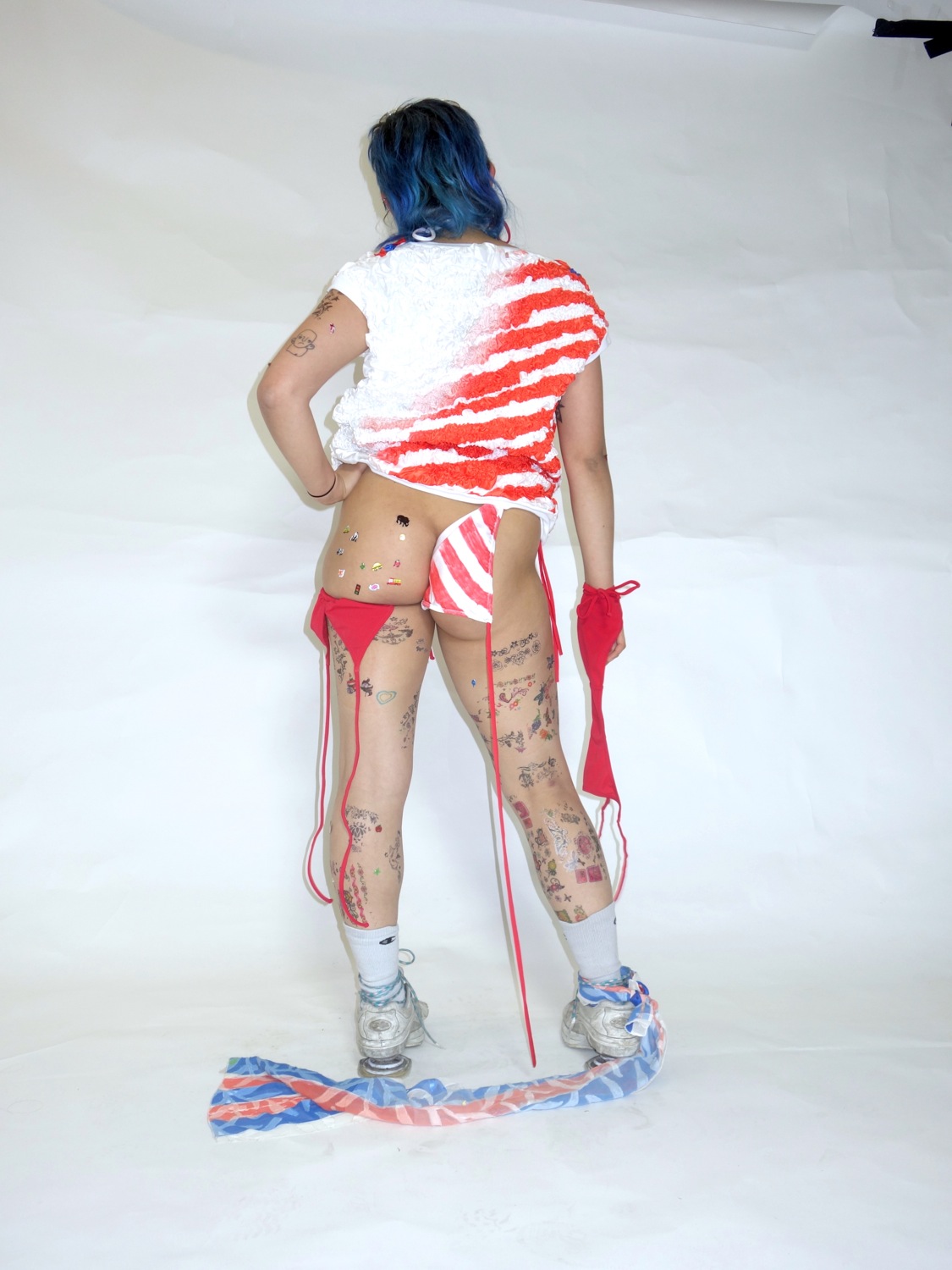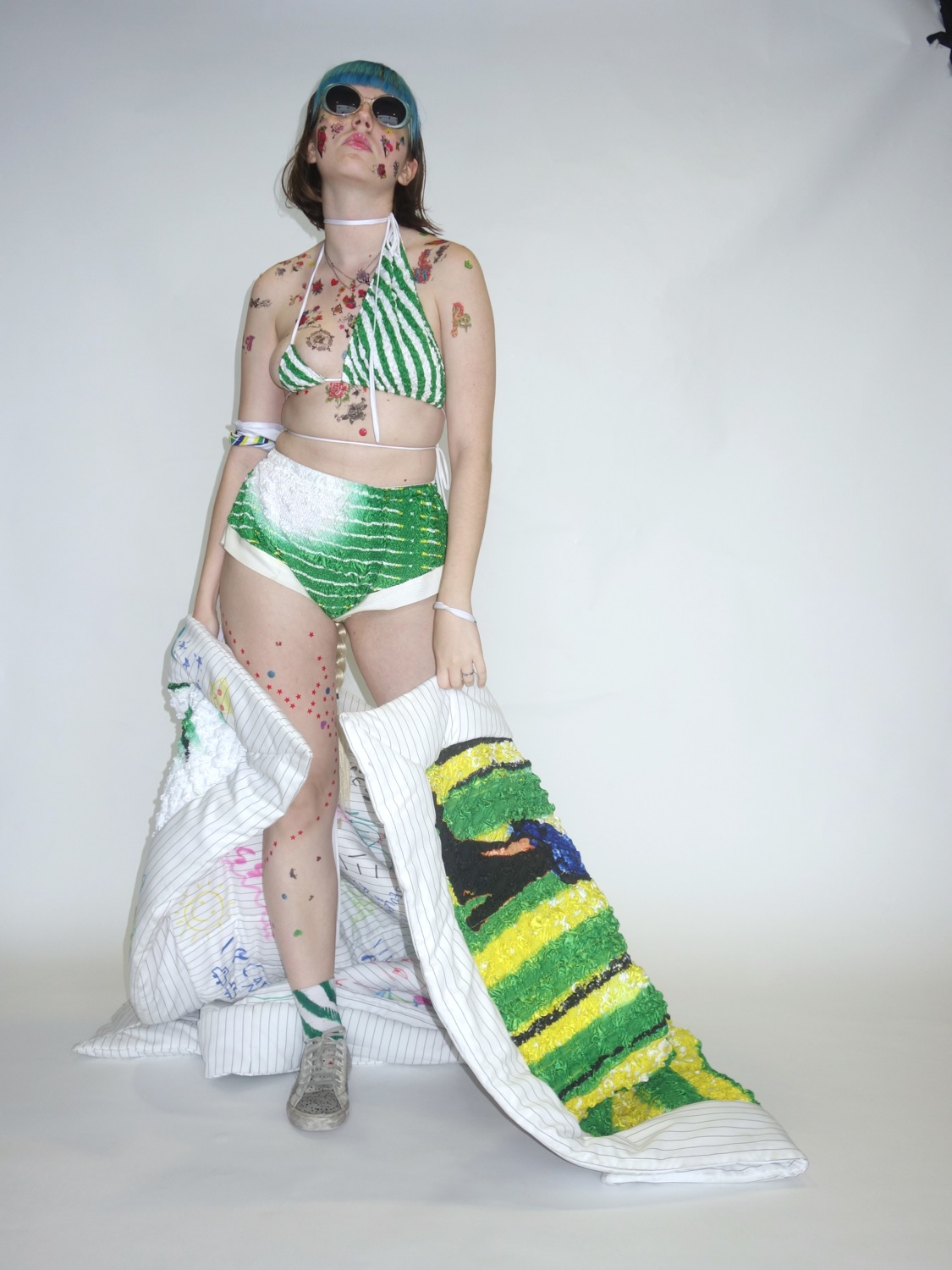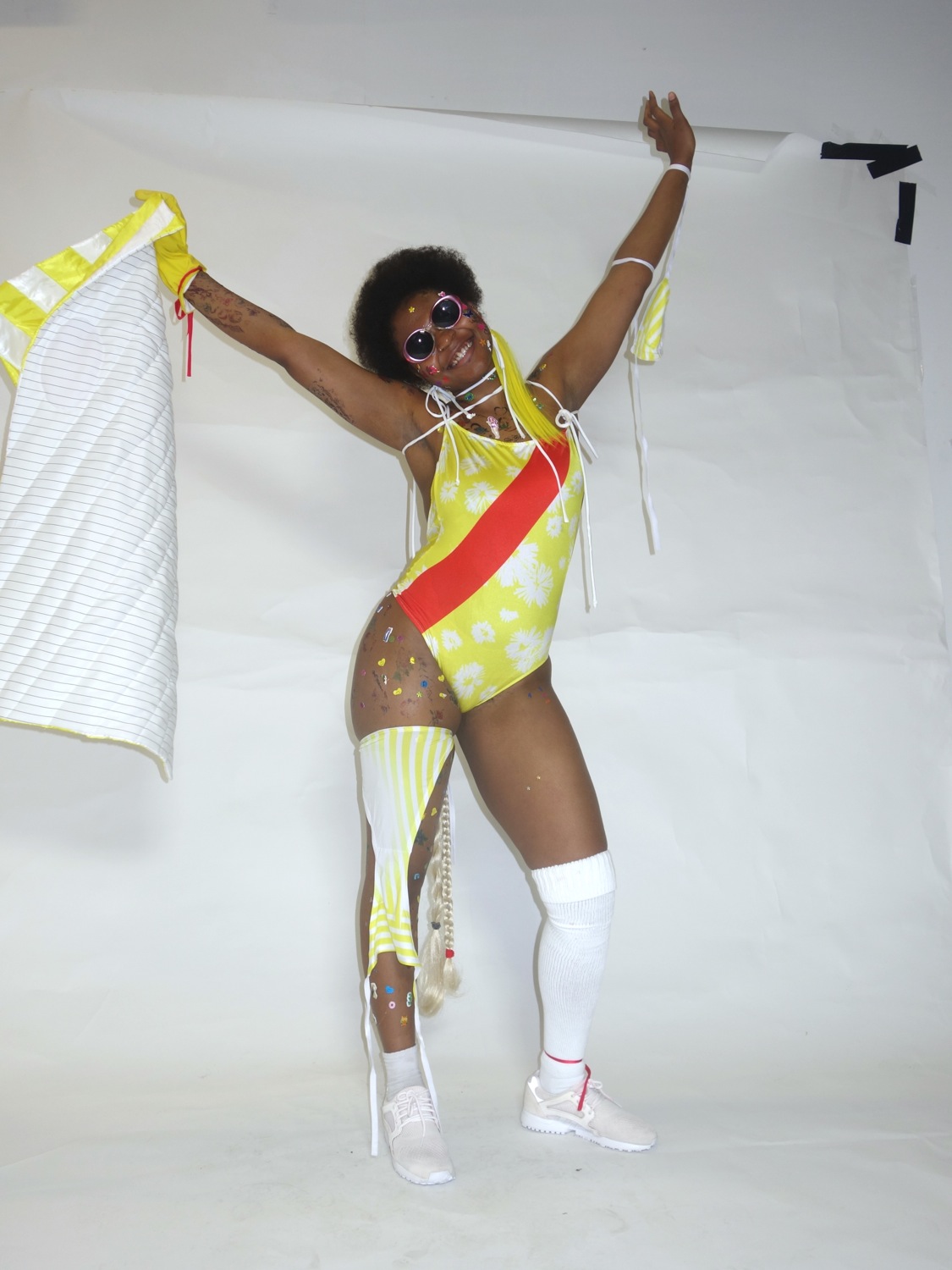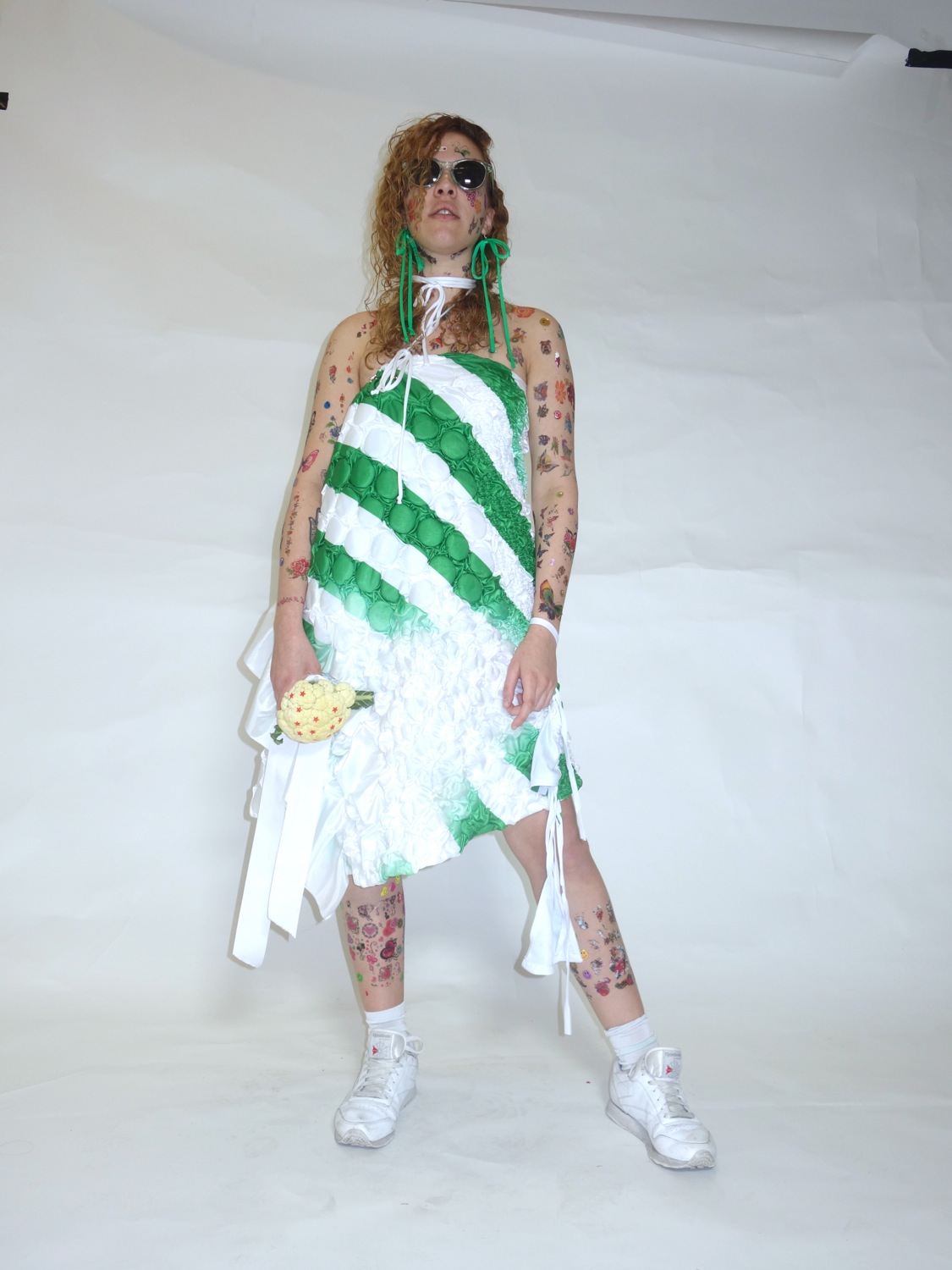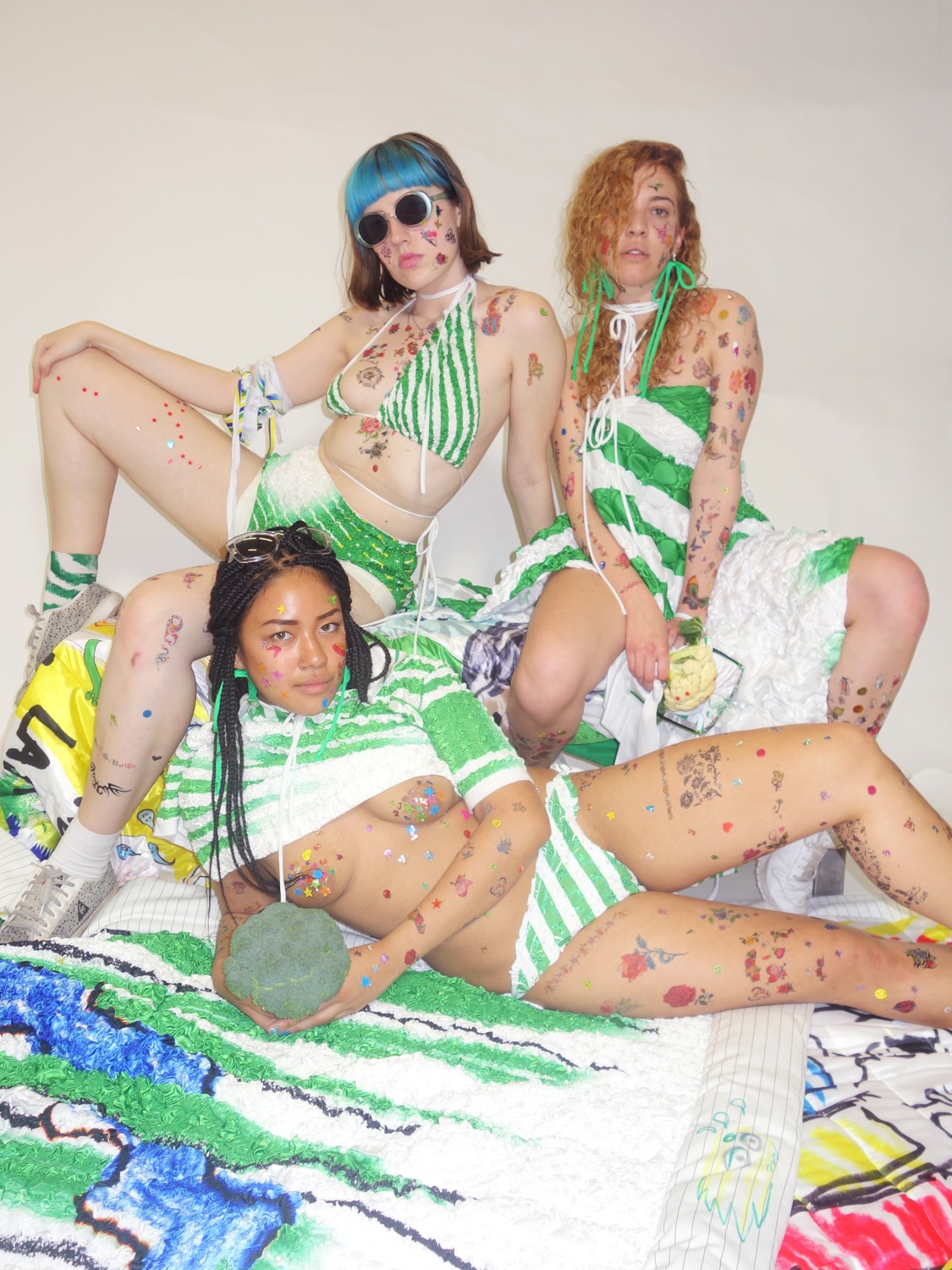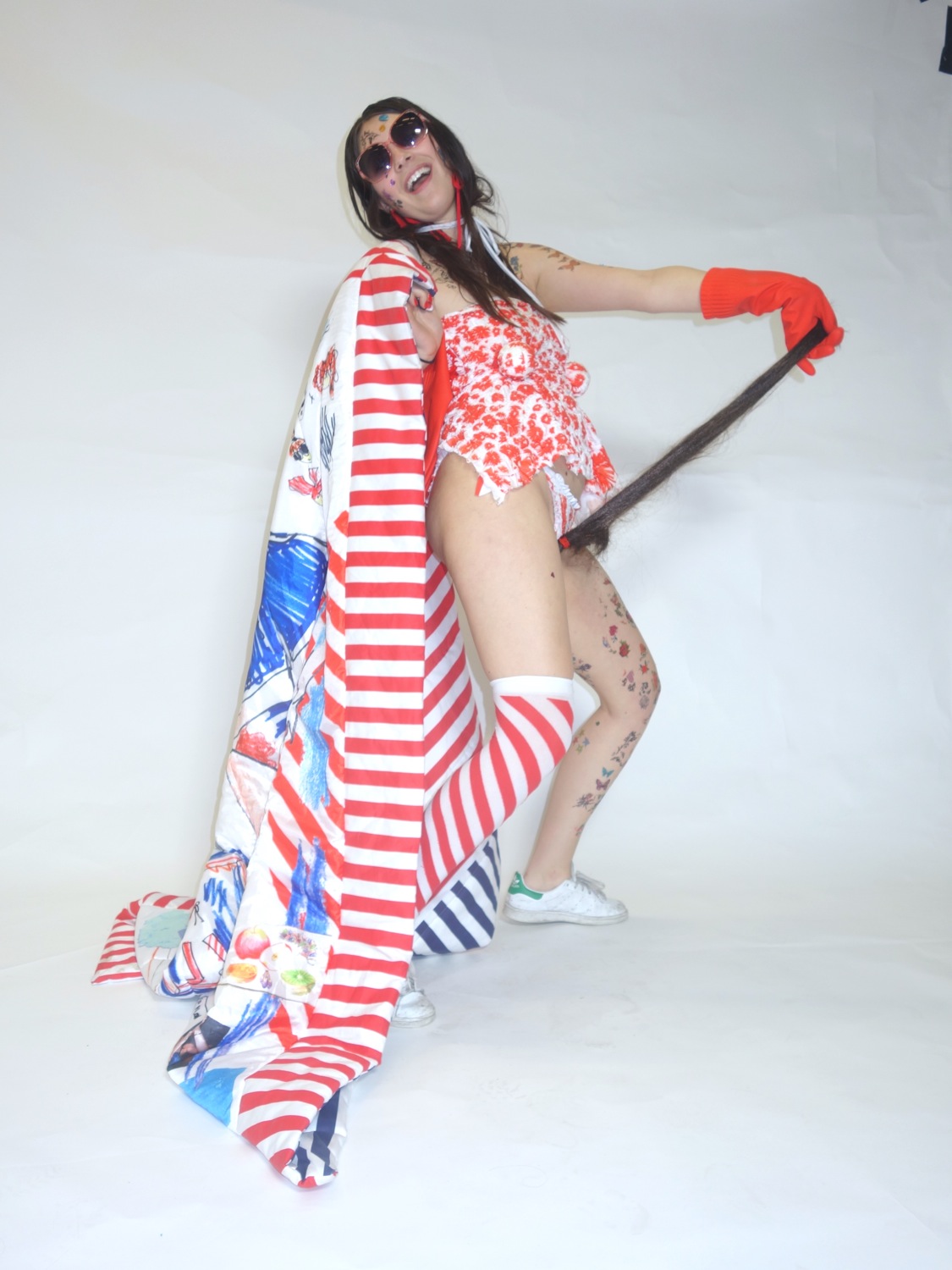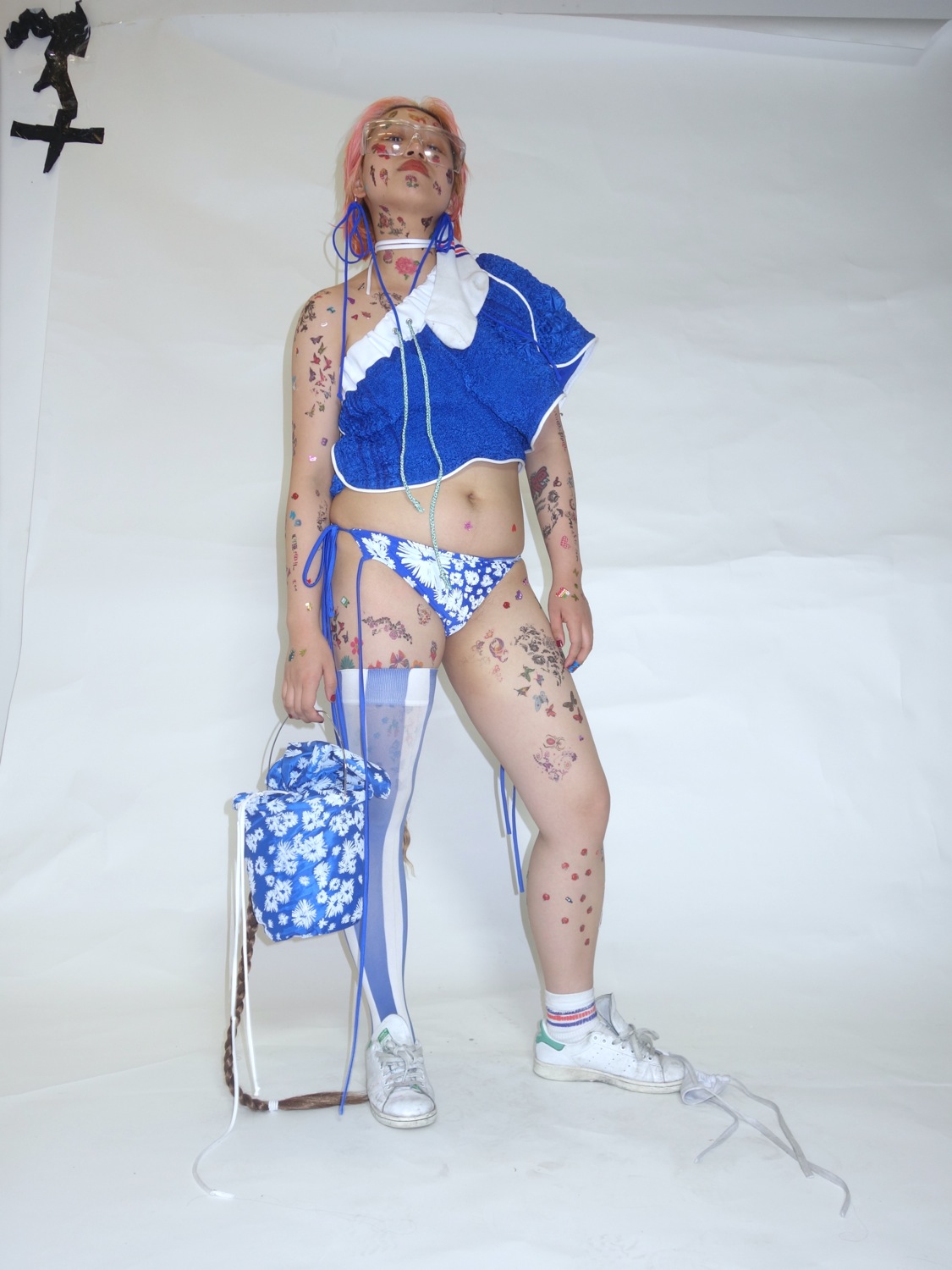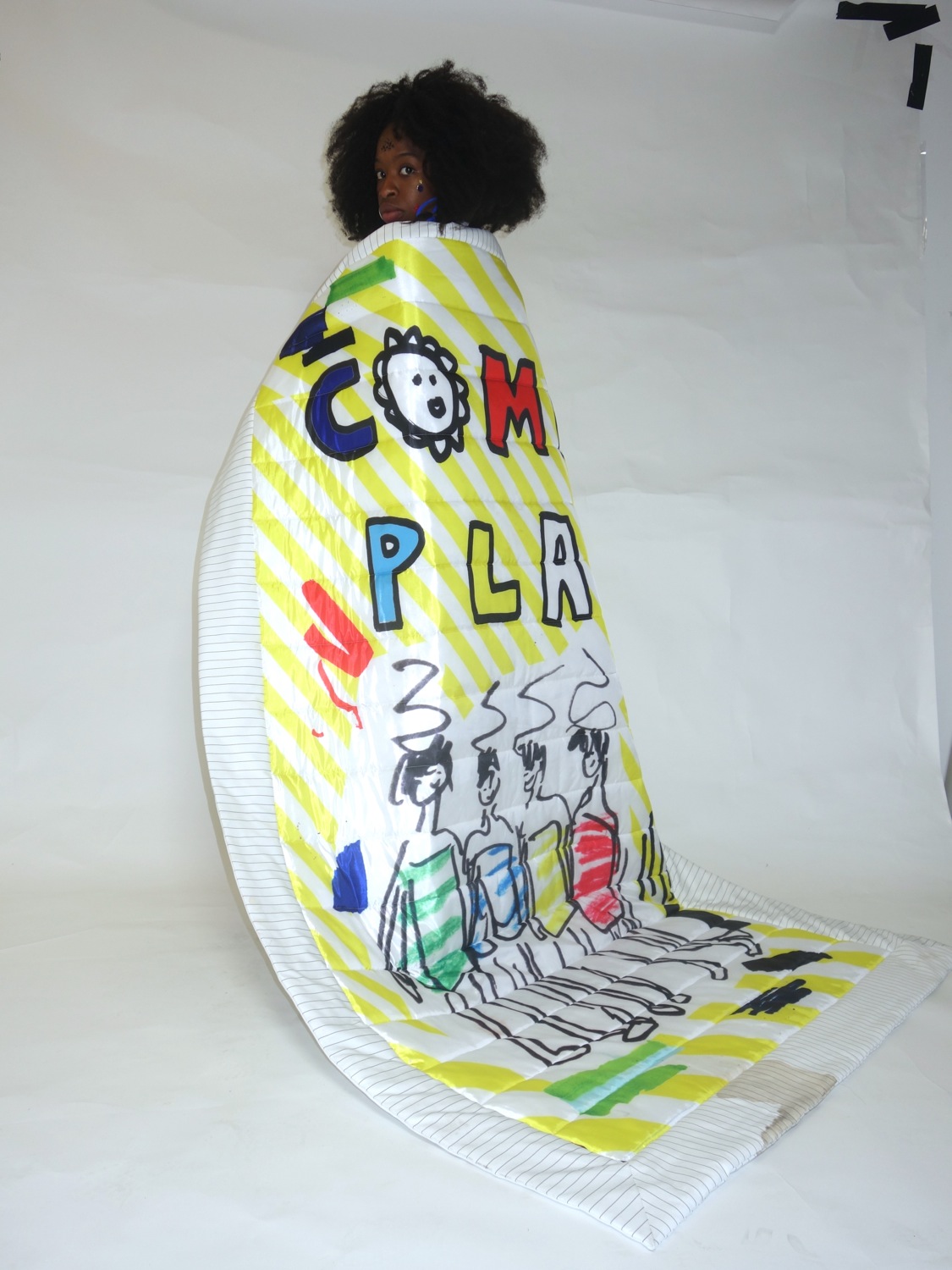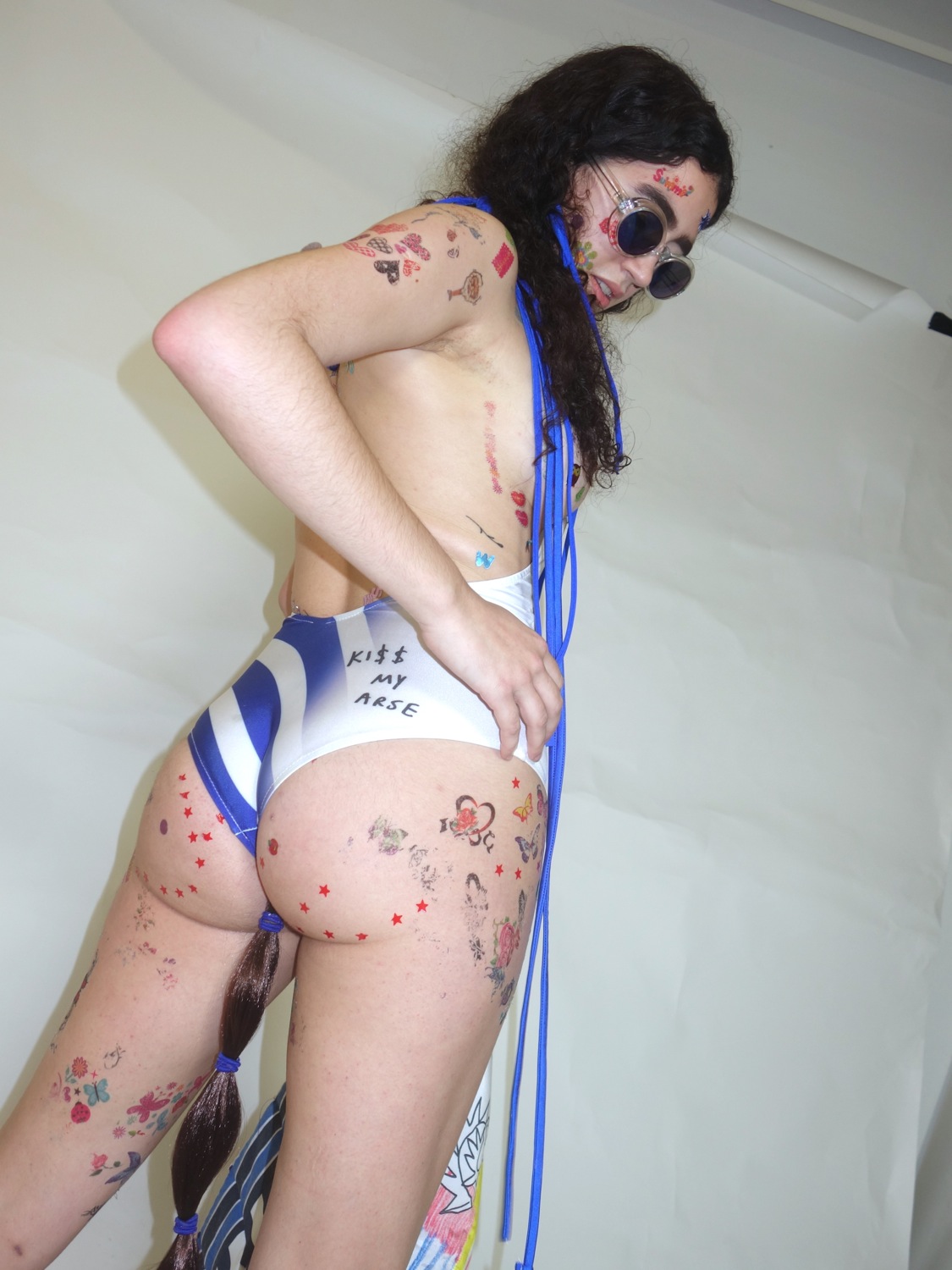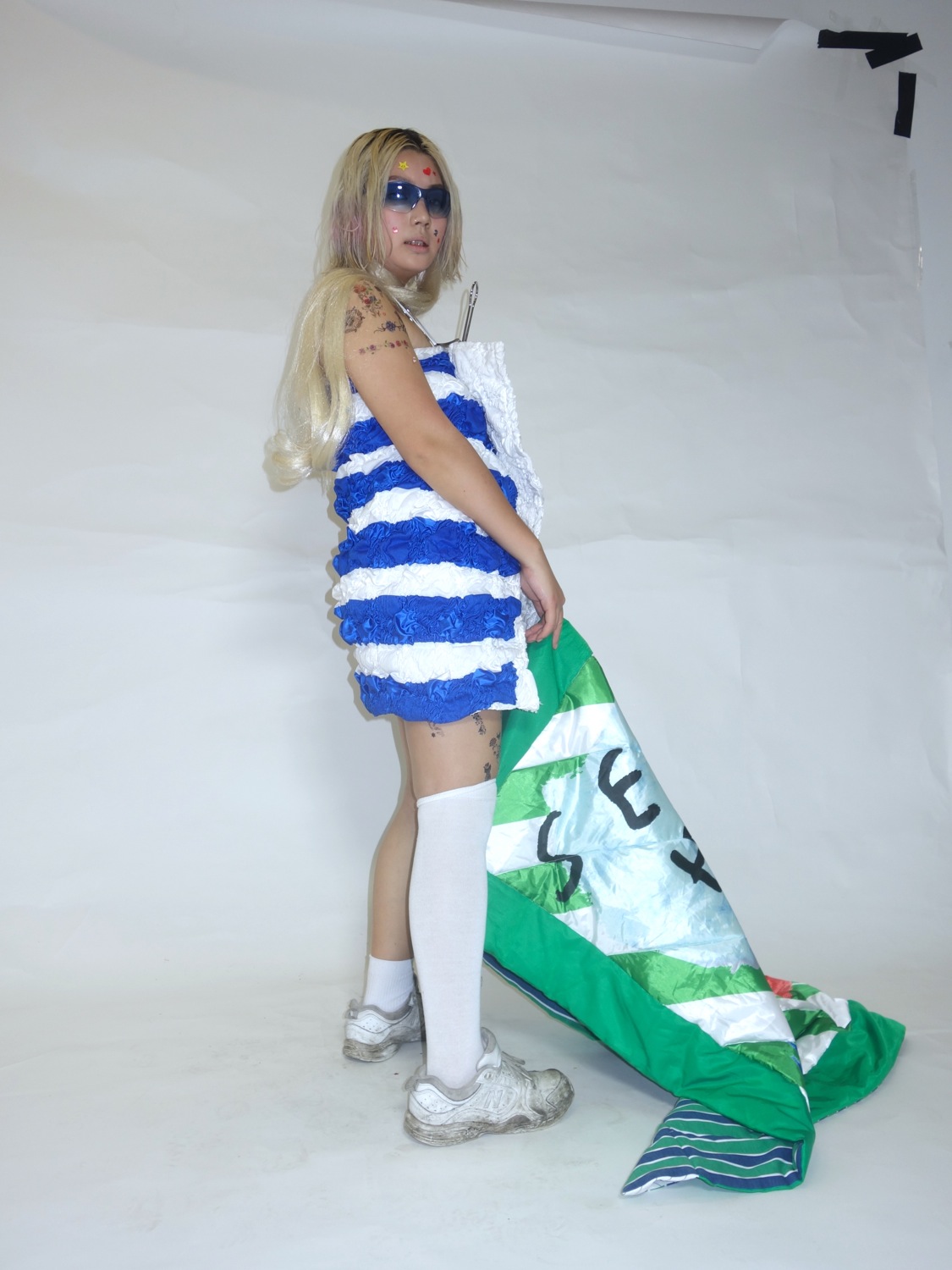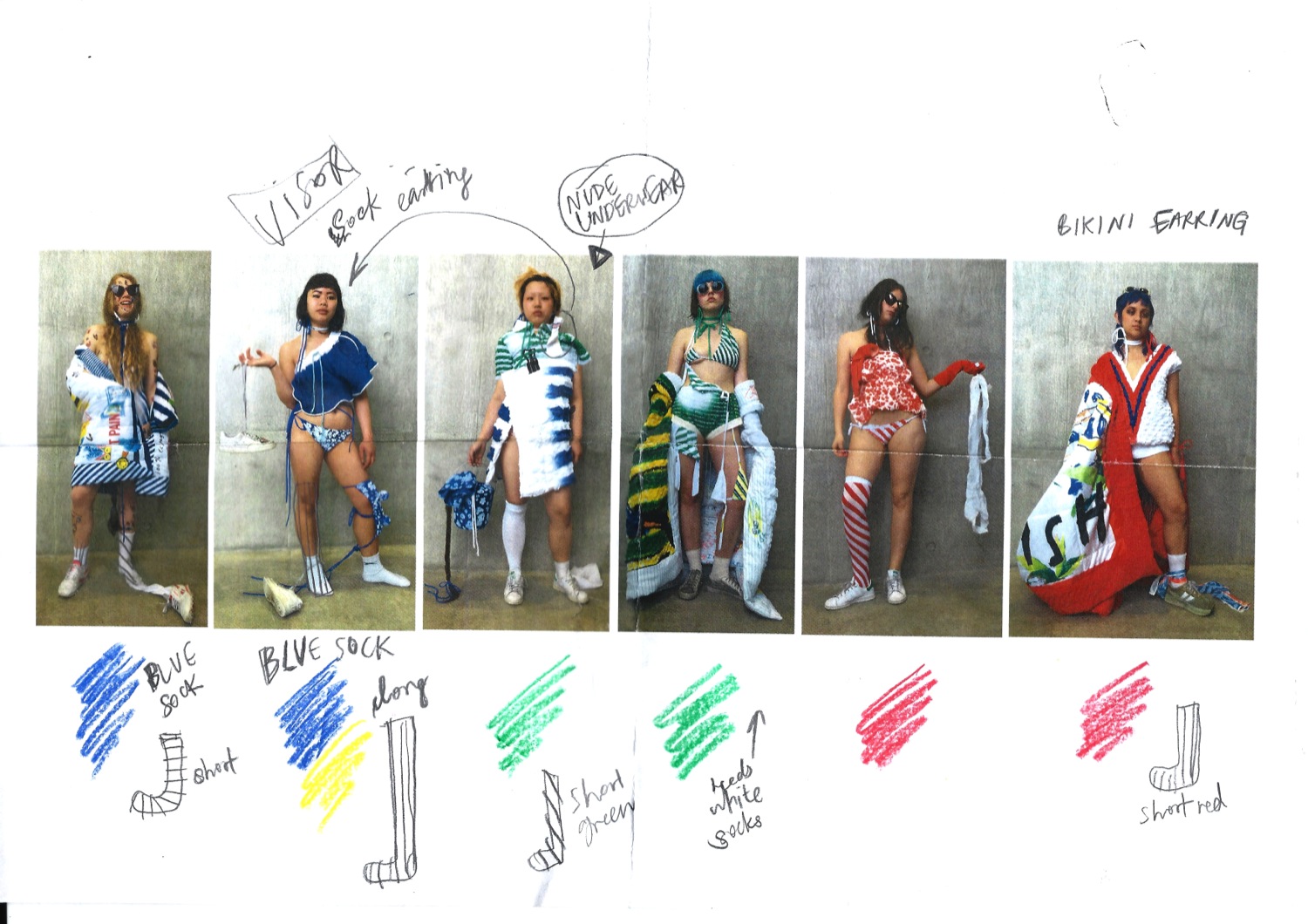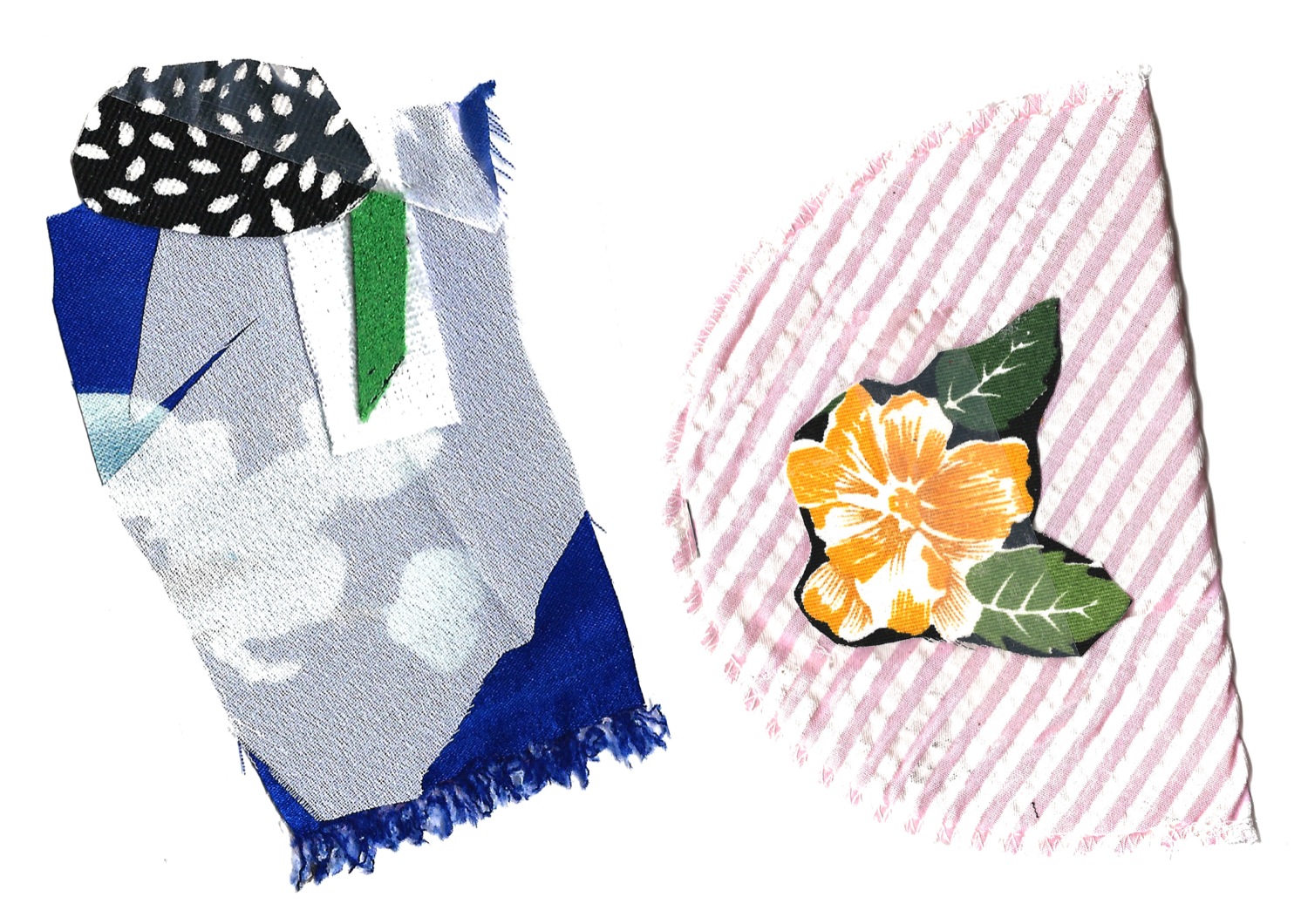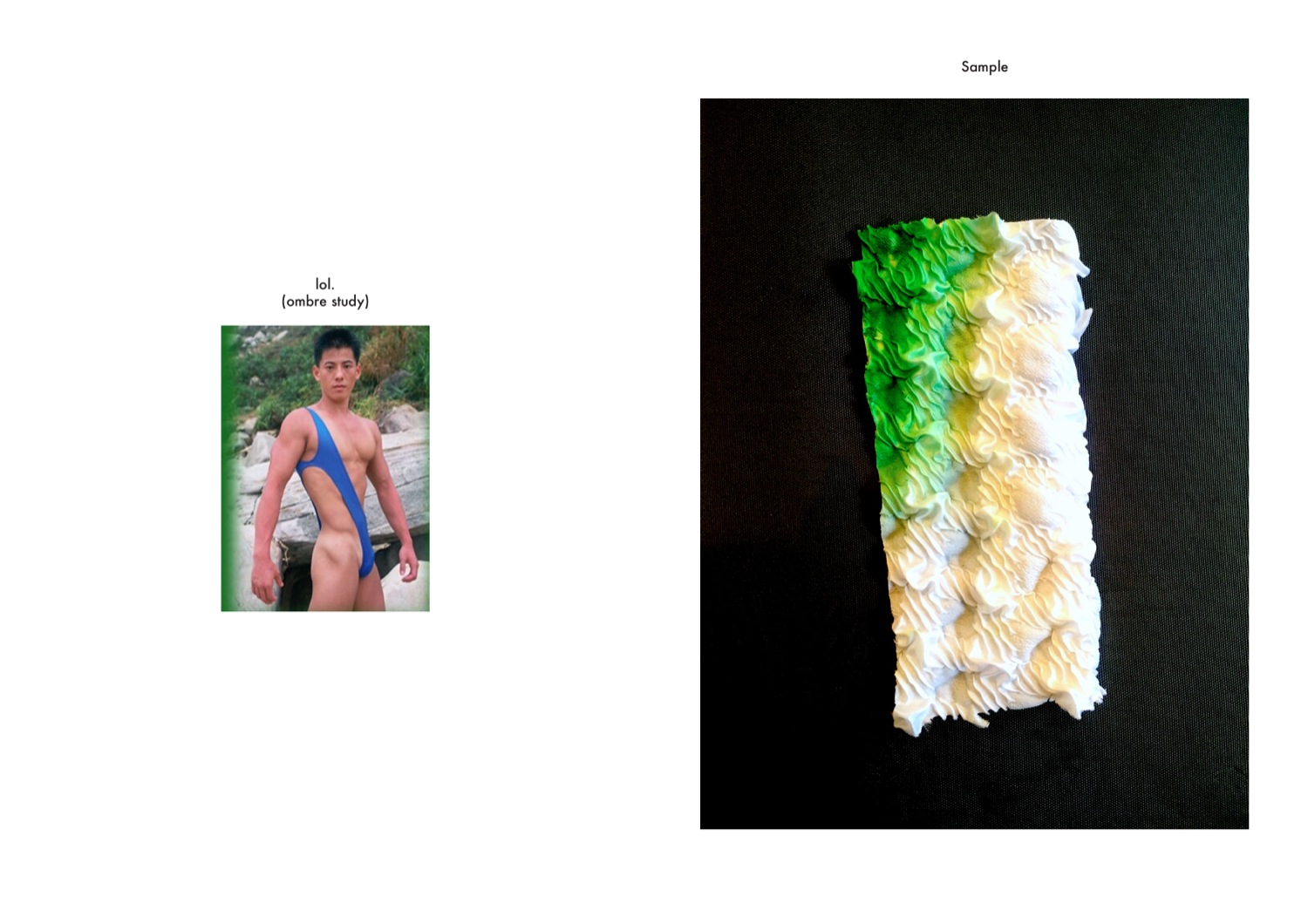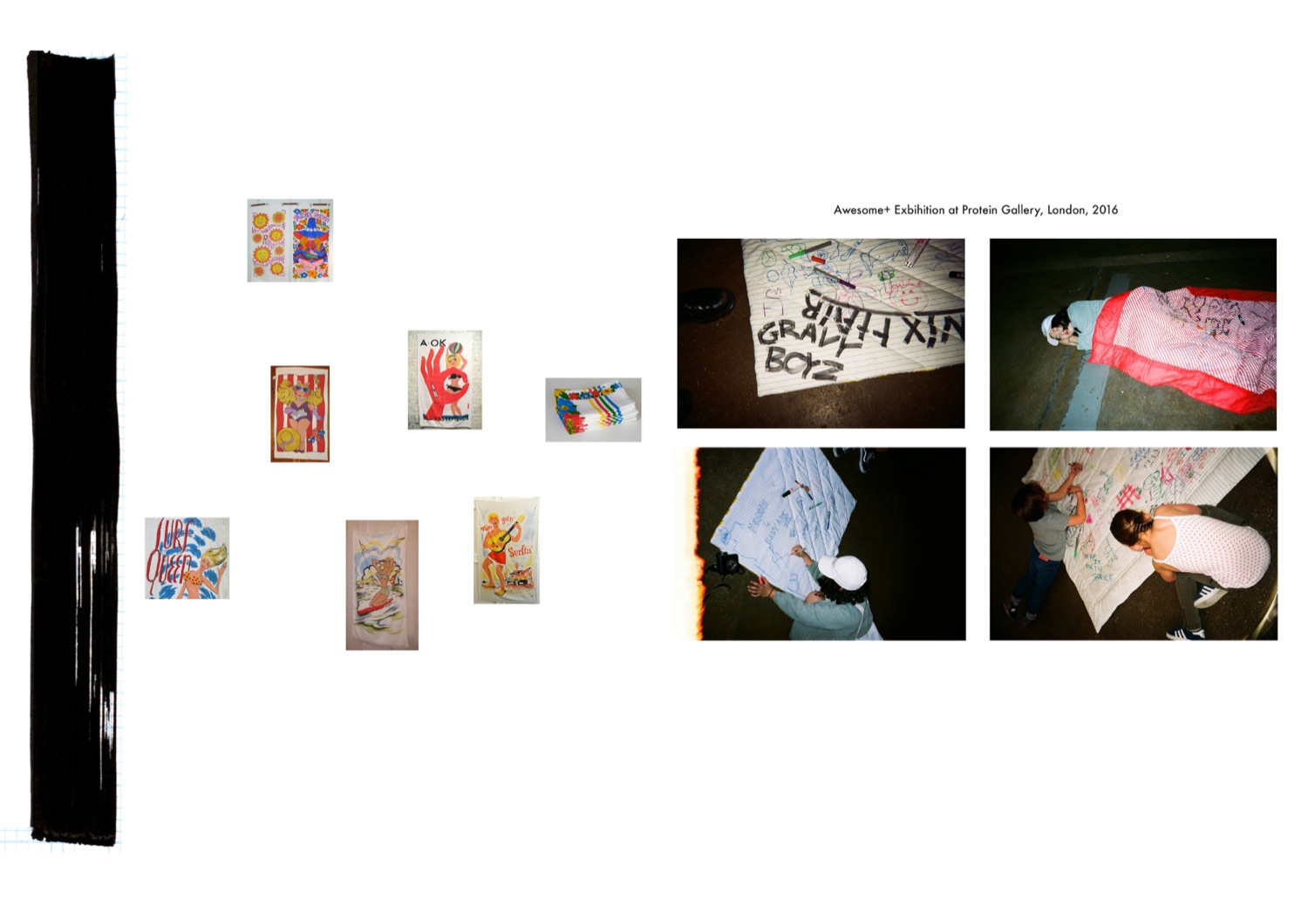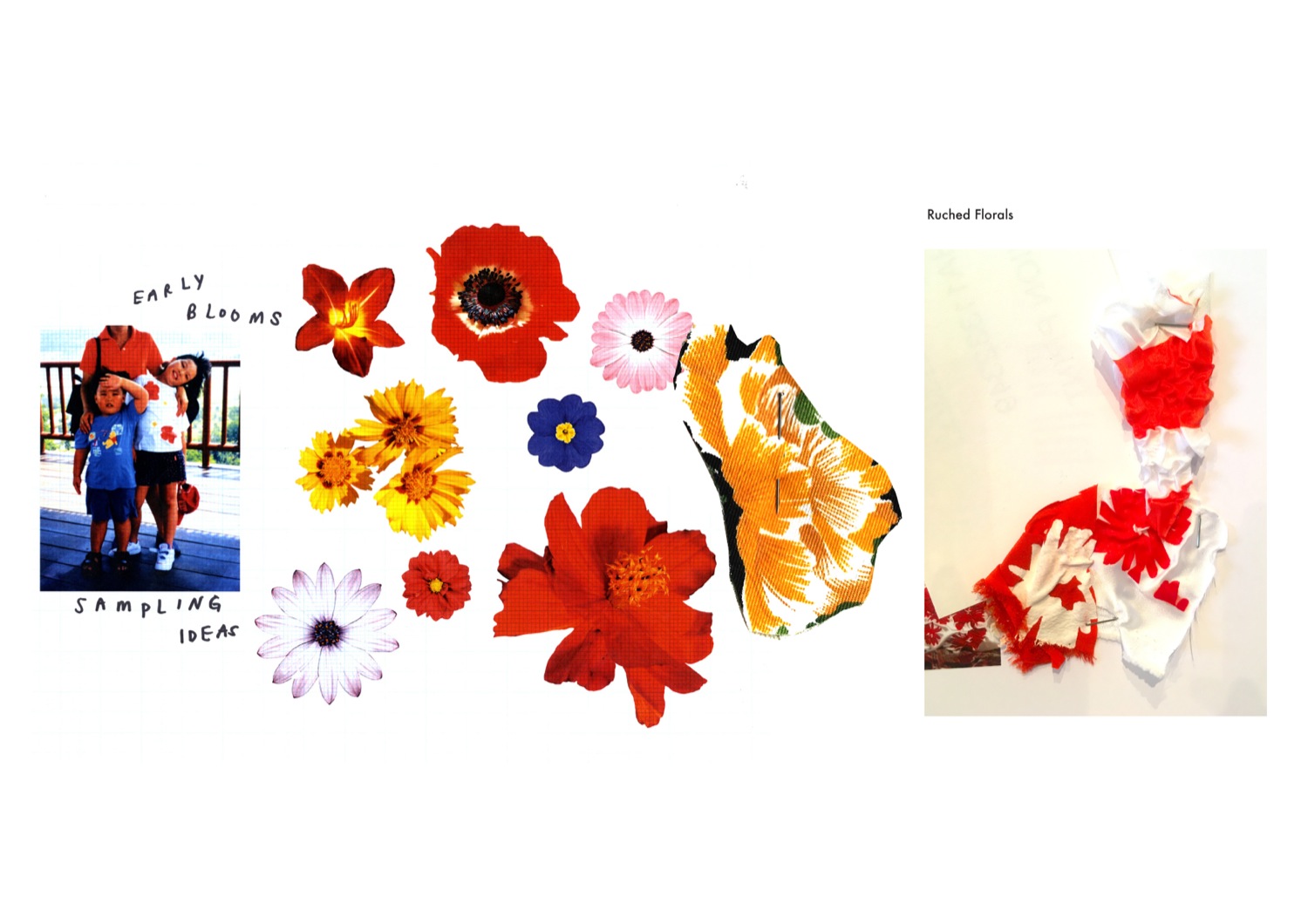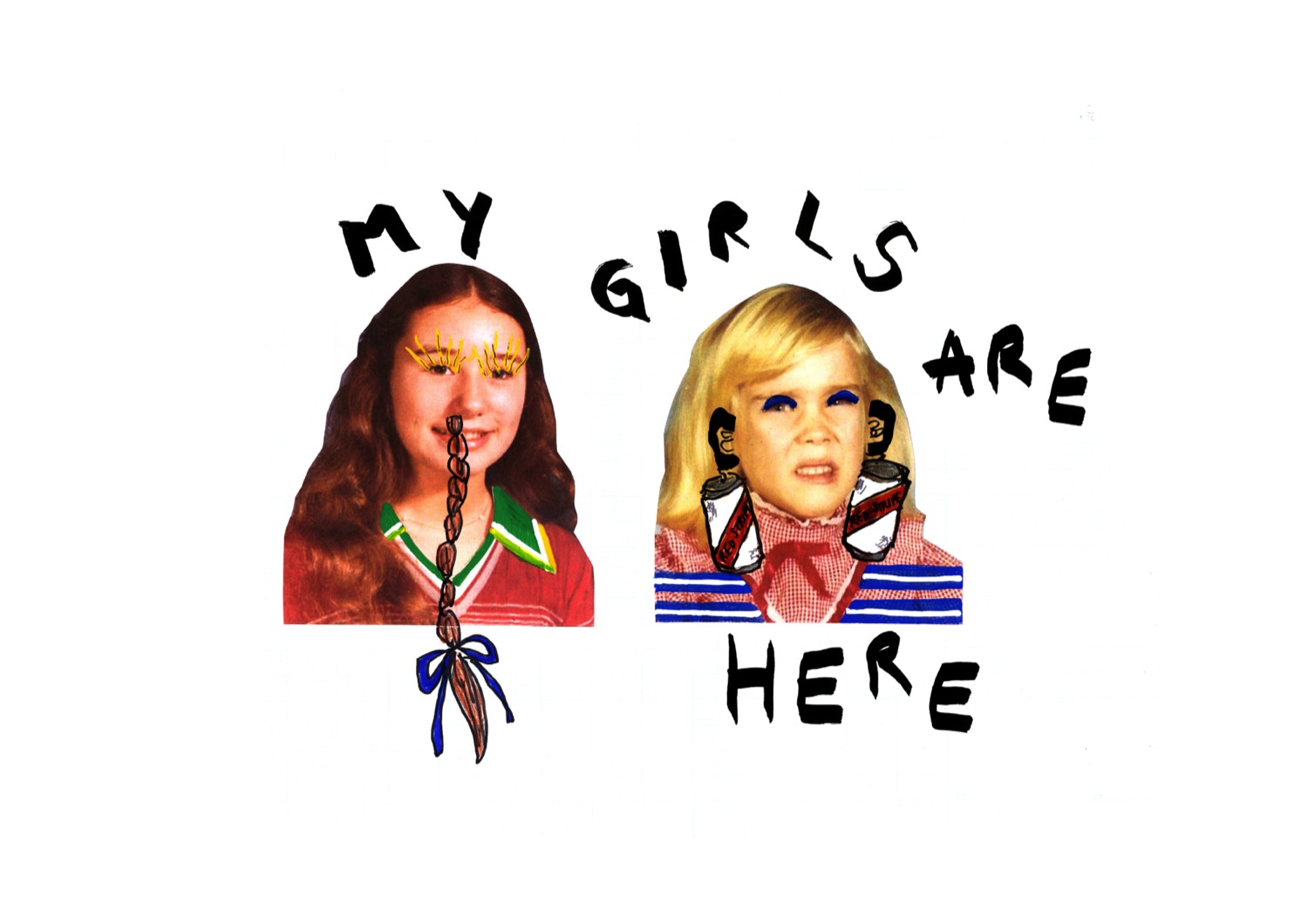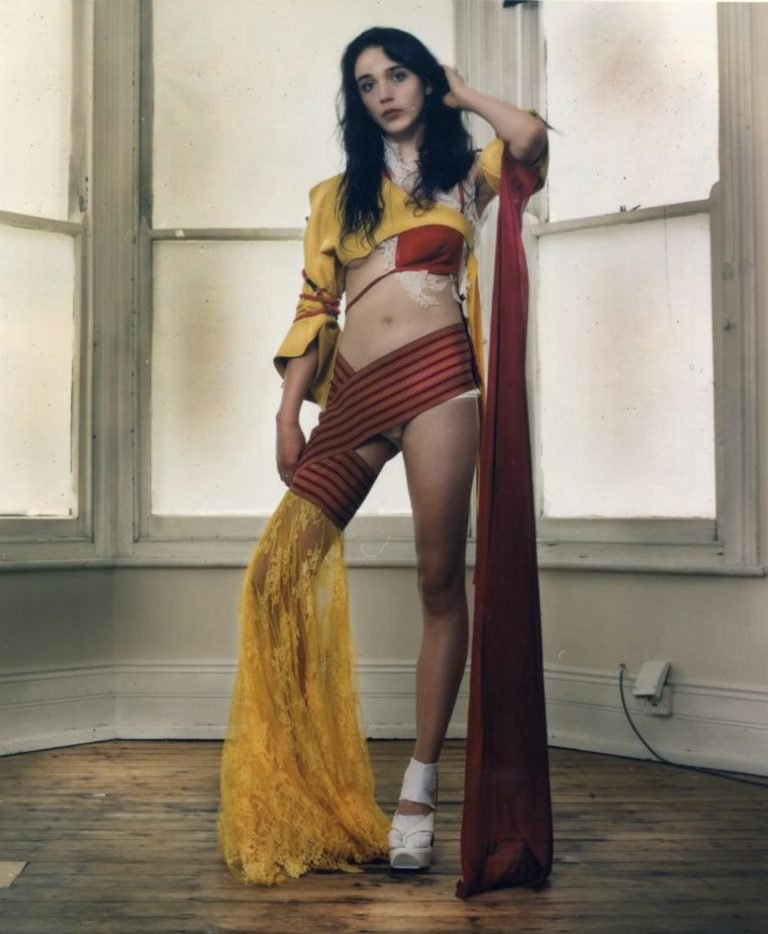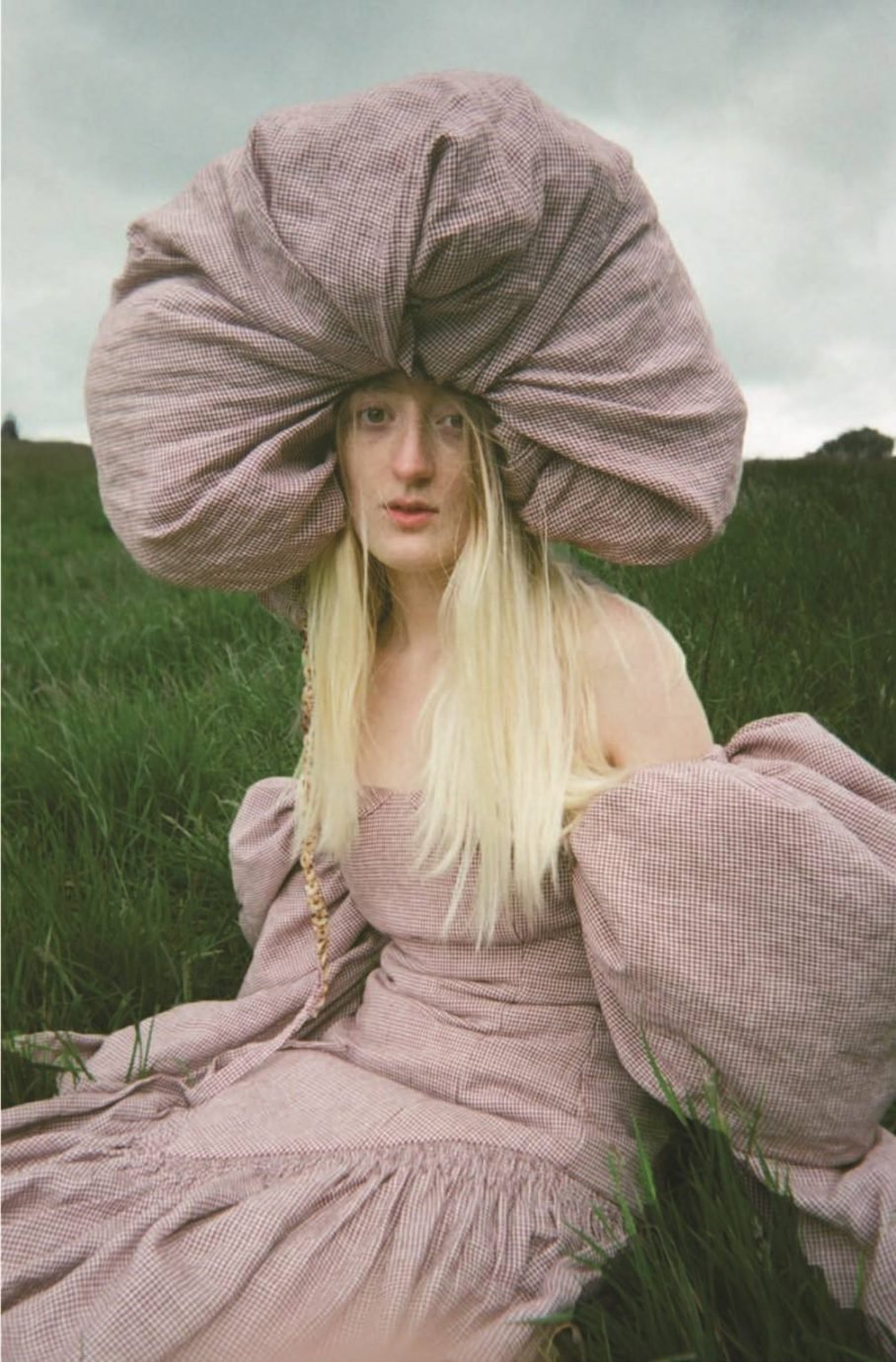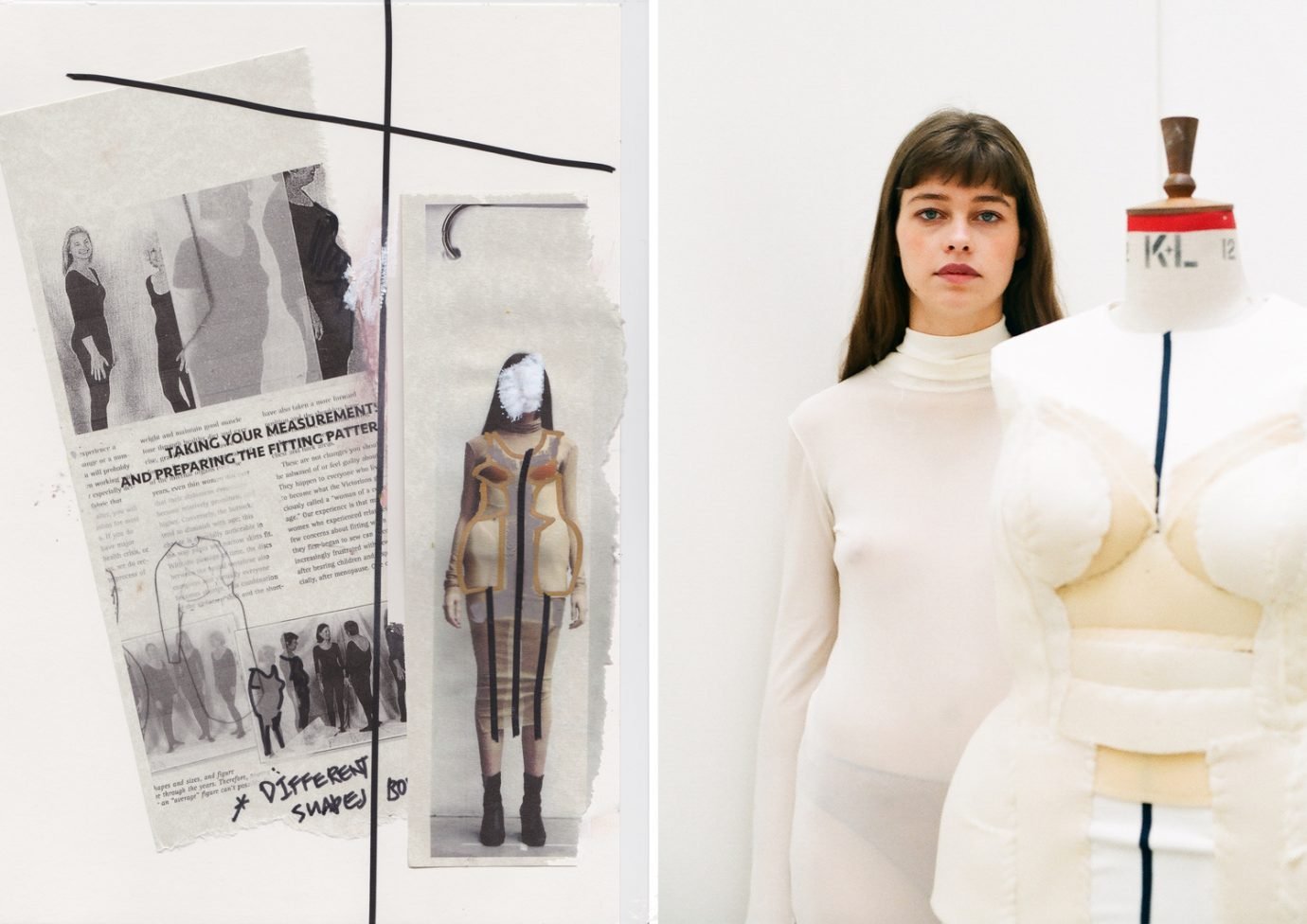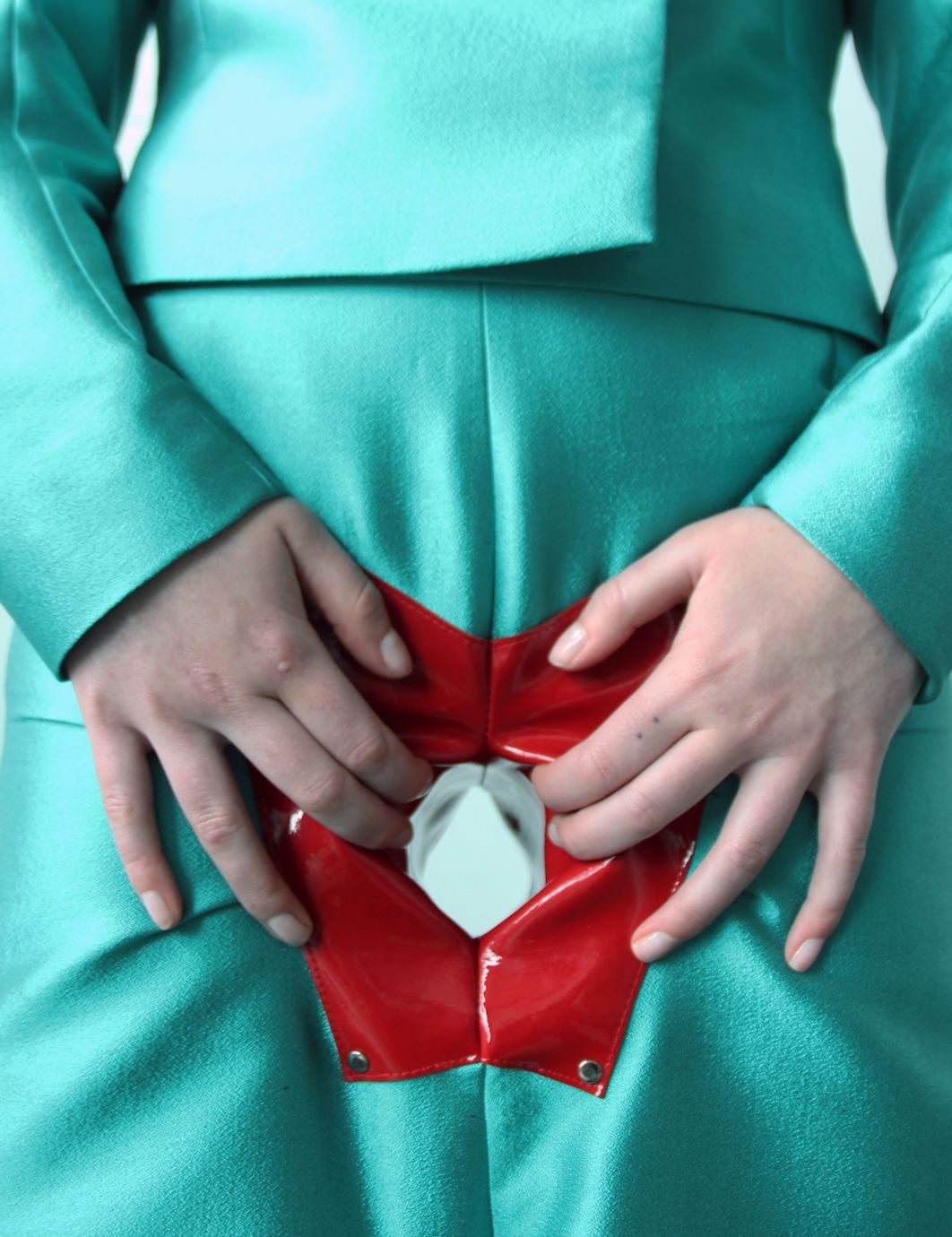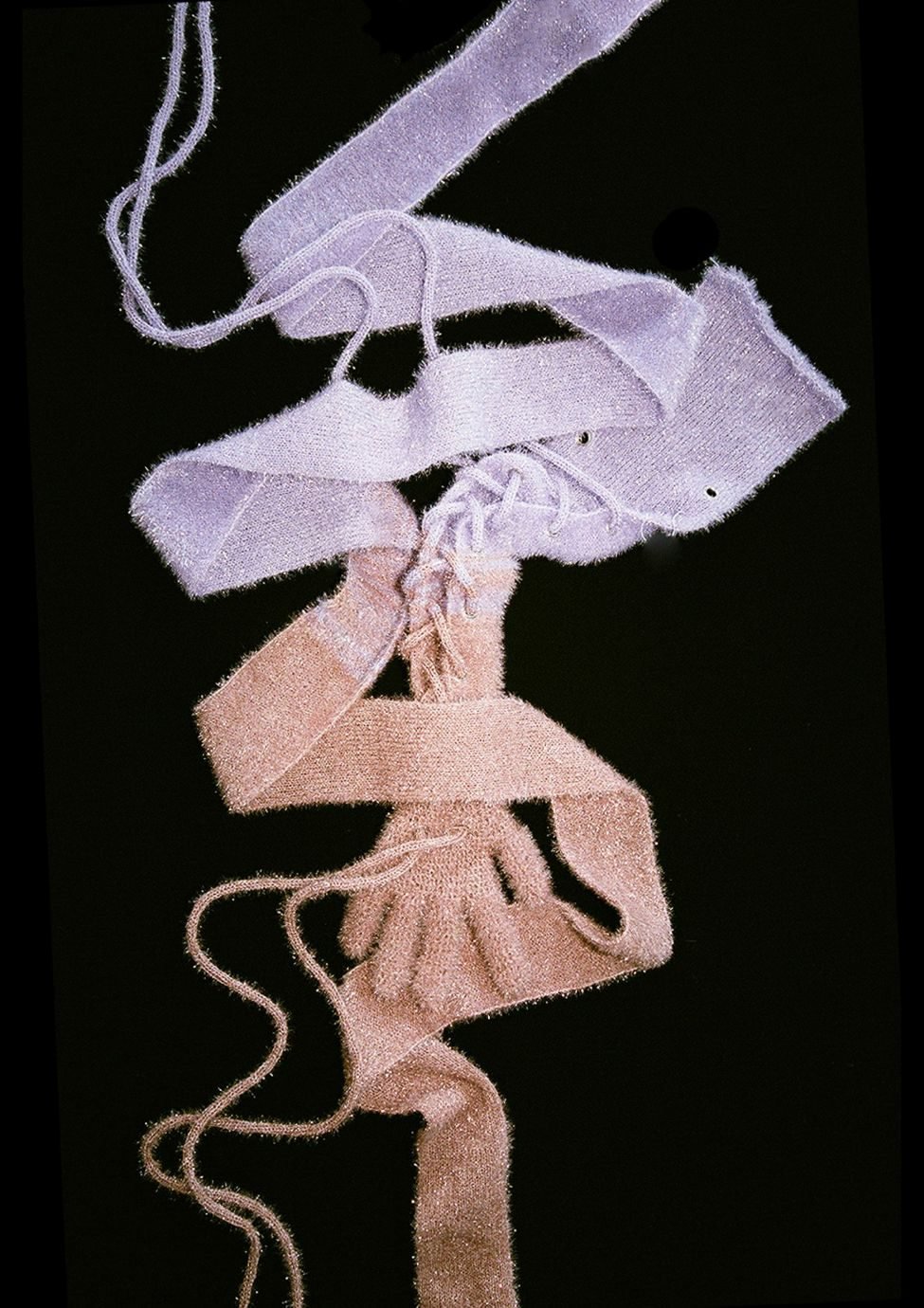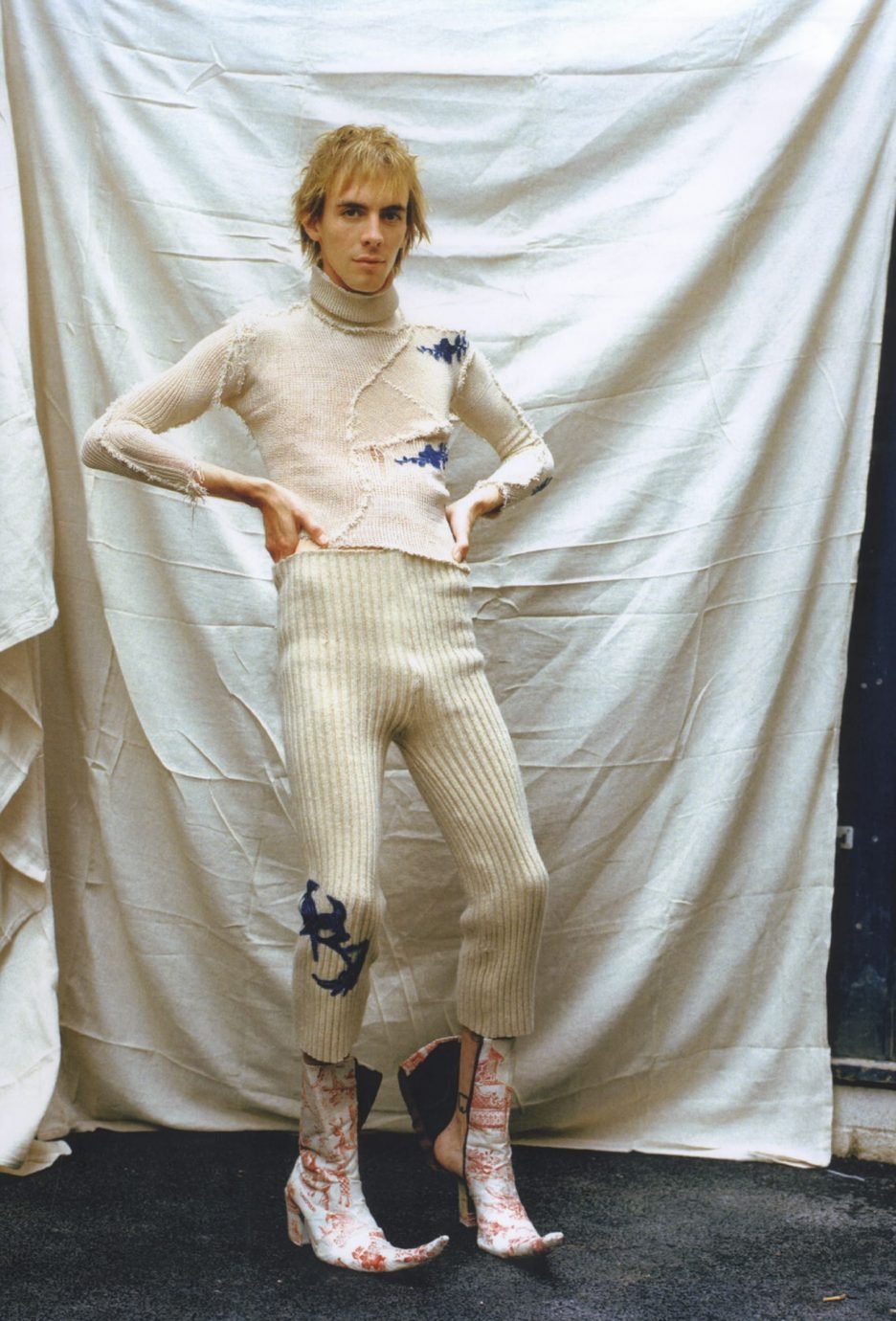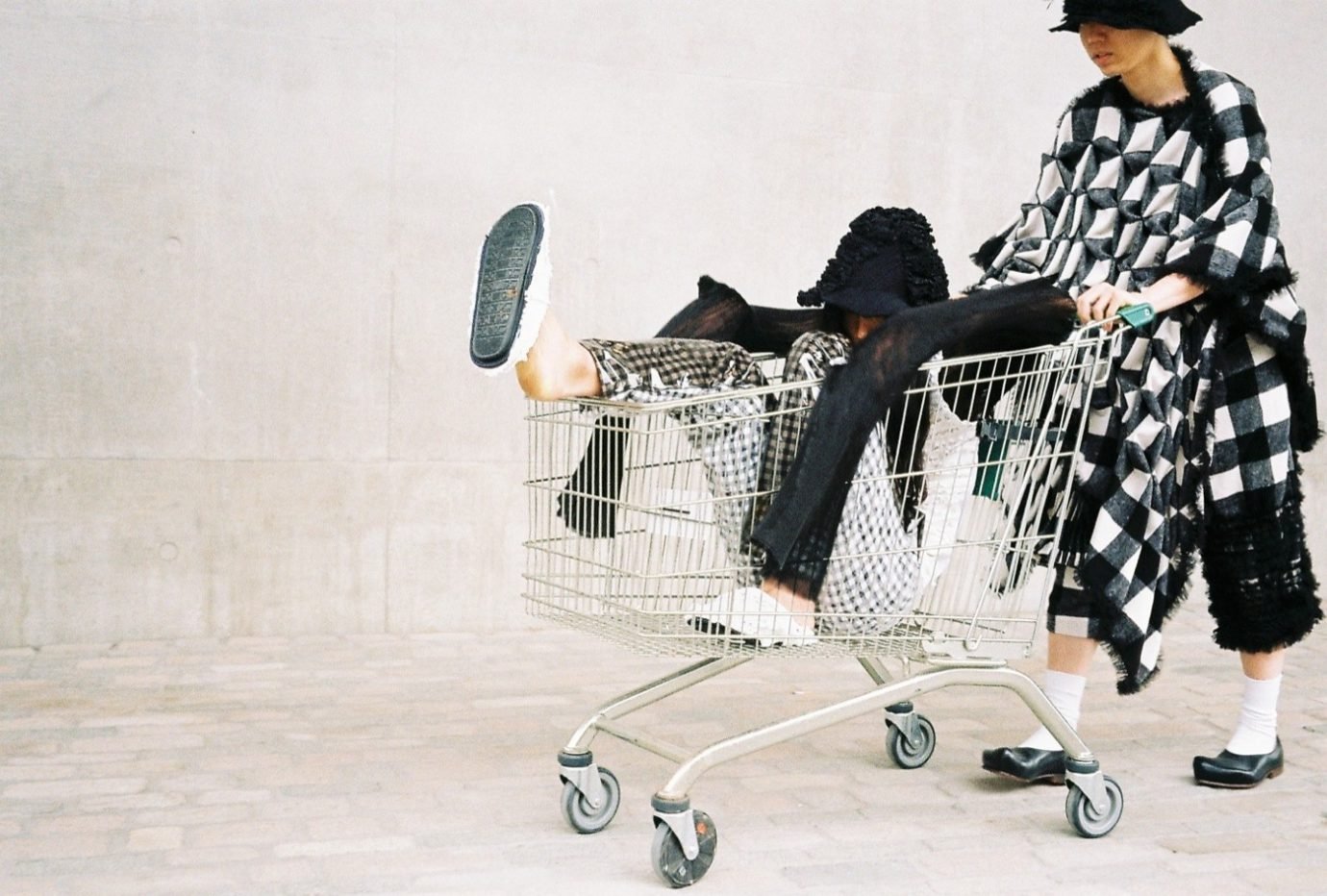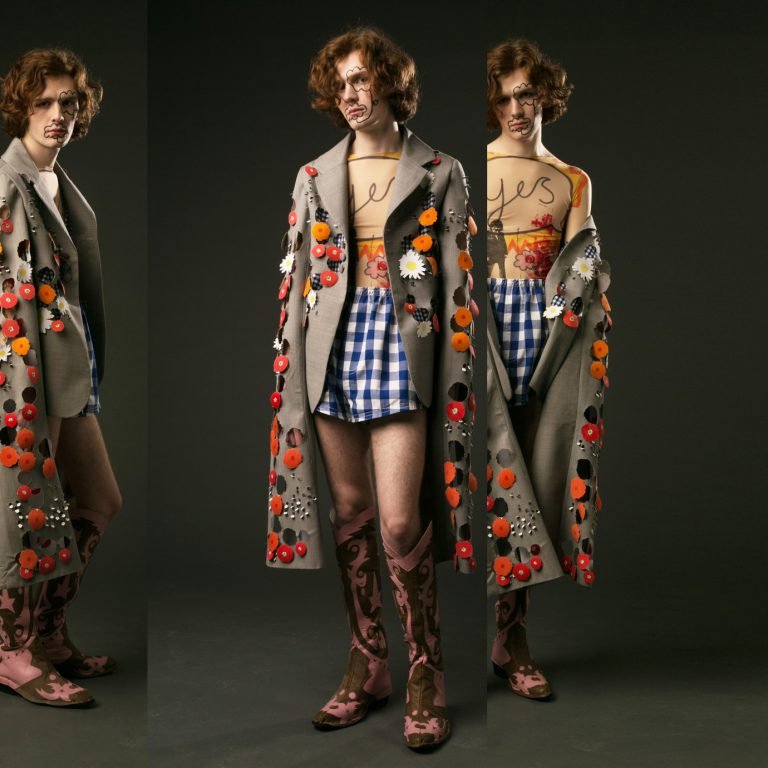“GRADUATING IS SCARY! YOU’RE THE BUSIEST YOU’VE EVER BEEN IN FINAL YEAR AND SUDDENLY YOU’VE GOT NOT THAT MUCH TO DO AT ALL. THERE’S A LOT OF THUMB-TWIDDLING AND ‘WHAT’S NEXT?!’”
How do you create a visual narrative out of an abstract concept? Is it a challenge to translate a very conceptual idea into something practical?
Even though it isn’t how I always work, the concept for my final collection was very personal and based on what was happening around me. A big part of the visual narrative was very attainable, in the sense that a lot of the imagery that informed me came from photographs that I had taken during my time here at CSM: School lunches, crits, drinks, birthdays, night outs, nights in, kebab shops, sleepovers, holidays… The list goes on! This method felt like the most organic one in order to produce a visual narrative given the feeling I wanted to achieve.
How did your collection develop during the course of the year? Did you face any serious challenges during the production process?
There were a lot of design changes throughout the year. My pre-collection was dramatically different to the collection I presented at the end of the year, but the concept was consistent. As for production, it was the first time I had ever tackled swimwear, so I had a lot of learning to do! Thank god for Esme Young – pattern-cutting tutor extraordinaire, queen (sewing) bee and owner of quite a covetable collection of vintage bras and swimwear. I had the privilege of carefully examining them, and some of the finishings were just fantastic! They were amazing for research and stirred up my curiosity in the realm of stretch fabrics, which also fed them into my textile fabrication process.

